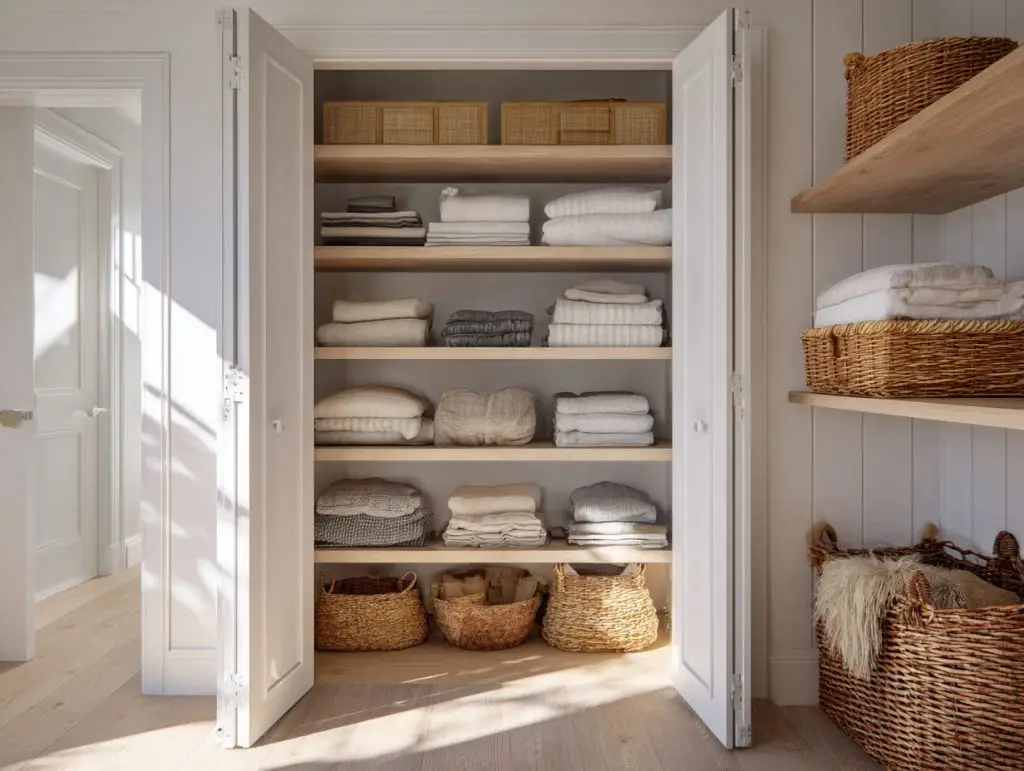
When One Small Space Exposed a Big Problem
1. The Closet I Never Thought About
It started with something simple — the hallway closet.
The one I rarely opened unless I needed an umbrella or spare towel.
One day in Destin, while doing my usual weekend clean, I decided to “refresh it.”
Ten minutes, I thought. Maybe fifteen.
Two hours later, I was still there.
Surrounded by old linens, forgotten bags, half-used products, extra pillows — things I hadn’t touched in years.
The air inside felt thicker than the rest of the house.
Even after I’d dusted and wiped everything, it still smelled heavy.
That’s when I realized: I wasn’t cleaning dirt. I was cleaning stagnation.
2. The Hidden Weight of Storage
Most homes in Destin share the same quiet enemy — humidity.
We fight it on the surface, but it’s the closed spaces that truly trap it: closets, cabinets, drawers.
I’d been keeping everything “perfectly stored,” thinking that meant “perfectly safe.”
But what I’d actually done was seal moisture inside every folded layer.
Each box and stack held air that never moved.
Every time I opened the closet, I could feel it — that faint, warm stillness that no freshener could hide.
It hit me: the place meant to keep things clean had become the one that made the whole house feel stale.
3. The Emotional Mess Behind It
As I started sorting, I found more than just objects — I found decisions I hadn’t made.
Clothes that didn’t fit but “maybe one day.”
Old towels “for guests.”
A bag of things to fix “someday.”
Each item carried a tiny “not yet.”
I wasn’t storing things — I was storing hesitation.
And that hesitation had built a kind of invisible clutter that extended beyond the closet door.
4. The Moment It Clicked
By the time I finished, I had three empty shelves and a strange sense of relief.
The air felt lighter.
The smell faded on its own.
Even the hallway outside the closet seemed fresher.
That’s when I understood:
Closets don’t just hold things — they hold energy.
And when that energy stagnates, it seeps into everything around it.
That single space changed how I saw my entire home.
Because if one closet could affect the air of a hallway,
what was the rest of my “organized storage” really doing?
The Sharky Method for Storage That Breathes
1. Start With Air, Not Objects
Every closed space starts dying from the same thing — still air.
That’s why, in Destin’s humidity, the first rule isn’t “declutter,” it’s ventilate.
Here’s what I do now:
- Keep closet doors open 10–15 minutes a day while airing the house.
- Once a week, run a small fan nearby to move air through even closed corners.
- Avoid sealing bins completely — use woven or breathable baskets instead of plastic.
Storage shouldn’t trap. It should circulate.
2. Rethink What Belongs Inside
After that closet day, I made a rule: if it needs airflow, it doesn’t belong in storage.
That means no damp towels, no half-dry shoes, no laundry “for later.”
They only spread moisture.
And for everything that does belong — I organize by breathability:
- Top shelf: light items (linens, covers) in cotton or mesh bags.
- Middle shelf: items you use weekly — they naturally move air.
- Bottom shelf: solid bins for rarely used things, labeled clearly.
Each layer supports movement — up, down, and out.
3. Fight Humidity Before It Settles
Closets in coastal homes collect what I call invisible wetness.
It’s the faint stickiness that builds overnight even if you can’t see it.
To prevent it, I use Sharky’s “two-layer dry” rule:
- Place two dehumidifying zones: one high, one low.
(Upper shelf for air moisture, lower basket for floor humidity.) - Once a month, wipe every surface with a dry microfiber cloth — no spray, no moisture.
- Keep one neutral bar of soap or linen sachet inside — absorbs odor naturally.
It’s quiet maintenance, not deep cleaning — but it keeps closets fresh indefinitely.
4. Declutter With Purpose, Not Panic
I stopped “purging” things in a rush.
Now I remove one shelf at a time, asking two Sharky questions:
- When did I last use it?
- Would I notice if it disappeared tomorrow?
If the answer to the second is no, it goes.
Simple. Calm. Sustainable.
The point isn’t emptiness — it’s clarity.
Closets don’t have to look bare; they have to feel light.
5. Turn Storage Into Part of Cleaning
This was the final mindset shift.
Closets aren’t separate from the house — they’re lungs.
If they stop moving air, the whole home grows heavy.
So now, every cleaning day, I open at least one storage space — even for a minute.
Let it exhale.
And every time I do, the air in the room feels like it resets itself.
The Sharky Rule That Stuck
“If it’s closed, it’s collecting.”
That simple truth changed everything for me.
Because now, my storage doesn’t hide humidity — it helps prevent it.
And every time I open that hallway closet, it still reminds me —
cleaning isn’t about storing things away.
It’s about keeping life in motion.
Read also: How I Learned to Clean Less and Notice More


